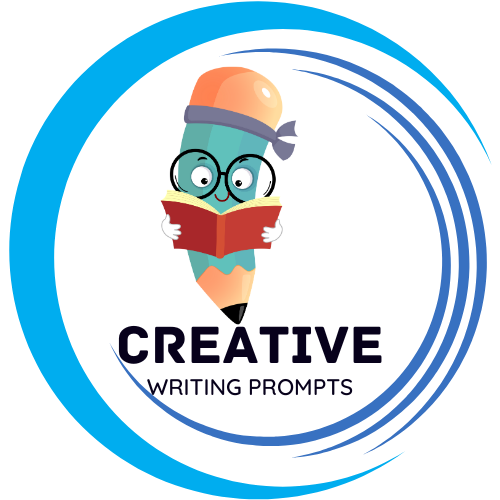Have you ever wondered how to make your writing look sleek, polished, and professional? Look no further! In this article, we will delve into the world of block format writing and explore its effectiveness in making your content stand out. Whether you are drafting a business proposal, composing a formal letter, or simply aiming to elevate your writing skills, mastering the art of block format will undoubtedly be a valuable asset in your toolkit. So, grab a pen and paper, or fire up your keyboard, as we uncover the ins and outs of this powerful writing technique. Get ready to take your writing to the next level!
Contents
- What is Block Format and Why is it Important in Professional Writing?
- Key Elements of Block Format Writing
- Structuring your Document in Block Format
- or , to represent the levels of importance in your heading hierarchy. This allows readers to quickly navigate through your content, helping them find the information they are looking for without having to read the entire document. In addition to headings, using bullet points or numbered lists is another effective way to structure your document in block format. This technique helps break down complex information into easily digestible chunks, making it easier for your audience to follow along. Remember to use the or HTML tags to create unordered or ordered lists. Consider using bulleted lists when presenting a series of related points, while numbered lists work best when presenting a step-by-step process or sequential information. By incorporating these formatting techniques, you can create documents that are not only well-structured but also visually appealing. Tips for Formatting your Text in Block Format
- Adding Emphasis and Visual Appeal to your Block Format Writing
- Common Mistakes to Avoid in Block Format Writing
- Proofreading and Polishing your Block Format Writing
- Frequently Asked Questions
- The Conclusion
What is Block Format and Why is it Important in Professional Writing?
In professional writing, block format refers to a specific layout style that enhances the readability and organization of documents. Instead of using indents for paragraphs, block format involves leaving a blank line between each paragraph and aligning the text to the left margin. This formatting technique creates clean and visually appealing documents, making them easier to scan and comprehend.
The use of block format is crucial in professional writing for several reasons. Firstly, it helps to establish a professional and polished appearance, reflecting the writer’s attention to detail and commitment to delivering high-quality work. Moreover, block format enhances readability and comprehension, allowing readers to quickly identify and absorb key information. By separating paragraphs with blank lines, block format helps to visually distinguish different thoughts and ideas, enabling a logical flow of content. This formatting style is particularly useful when conveying complex concepts, as it allows the reader to easily identify and navigate through important points. Whether it’s a formal report, a business letter, or a professional email, employing block format ensures clarity, professionalism, and effective communication.
Key Elements of Block Format Writing
In block format writing, there are several essential elements that contribute to its effectiveness and readability. By utilizing these key elements, you can ensure that your writing is well-structured, organized, and easy to navigate.
- Clear Subheadings: One of the main elements in block format writing is the use of clear and meaningful subheadings. Subheadings help to break up the content and provide readers with a quick overview of what each section will cover. They also make it easier for readers to skim and find the information they are looking for.
- Consistent Formatting: Another crucial element is maintaining consistent formatting throughout your writing. This means using the same font, font size, and spacing for all sections and subheadings. A consistent format enhances readability and professionalism. Additionally, using bullet points or numbered lists helps to convey information in a concise and organized manner.
- Logical Flow: A well-structured block format piece of writing follows a logical flow from start to finish. Each paragraph should transition smoothly into the next, allowing the reader to follow the train of thought easily. This can be achieved by using connecting words or phrases, such as “furthermore” or “on the other hand,” to establish a clear progression of ideas.
By incorporating these key elements into your block format writing, you can create content that is visually appealing, easy to read, and effectively communicates your intended message.
Structuring your Document in Block Format
:
When it comes to creating visually appealing and well-organized documents, using block format is an excellent choice. This formatting style is widely used for various types of documents, such as resumes, business letters, and reports. By following a few simple guidelines, you can ensure that your document is easy to read and aesthetically pleasing.
To start, one of the key elements of block format is the proper use of headings and subheadings. Headings should be bold and clearly indicate the different sections of your document. Use HTML tags, such as
When it comes to formatting your text in block format, there are a few tips and tricks that can help you make your content stand out and be visually appealing. By using HTML tags, you can easily enhance the readability and organization of your text. Here are some tips to consider:
1. Use headings: Headings are a great way to break up your text and provide a clear structure for your readers. By using the
to
tags, you can create different levels of headings to guide your audience through the content.
2. Utilize bullet points: Bullet points are a powerful tool for highlighting key points or creating a list. By using the
- and
- tags, you can easily create an unnumbered list that makes your text more scannable and digestible. Remember to keep each item concise and use parallel structure for clarity.
3. Bold important words or phrases: Sometimes, you may want to emphasize certain words or phrases to make them stand out. By enclosing the text within the or tags, you can easily make them bold. However, use this sparingly and only highlight the essential elements to avoid overwhelming your readers.
4. Use line breaks and spacing: Break long paragraphs into smaller chunks for easier reading. You can achieve this by using the
tag to create a line break or add more white space between paragraphs using the tag with appropriate CSS styling.
Remember, the key to formatting your text in block format is to strike a balance between creativity and readability. Experiment with different HTML tags and styles to find the combination that suits your content best.
Adding Emphasis and Visual Appeal to your Block Format Writing
Incorporating emphasis and visual appeal into your block format writing can greatly enhance the overall presentation of your work. By utilizing different formatting techniques and creative elements, you can grab the reader’s attention and make your content more engaging. Here are a few tips to help you add that extra flair to your writing:
1. **Utilize bold text**: Emphasize key points or important information by using bold text. This draws the reader’s attention and helps them quickly identify the most significant bits of your content.
2. **Insert images and diagrams**: A picture is worth a thousand words, they say. Including relevant images or diagrams in your block format writing can not only break up the text but also aid in conveying complex ideas or concepts. Visuals can be particularly effective when explaining processes or illustrating data.
3. **Use bullet points for easy reading**: Break down information into concise bullet points to facilitate easy reading and comprehension. This format allows the reader to scan through the main points quickly, making your content more accessible and digestible.
4. **Experiment with different font styles and sizes**: By playing around with font styles and sizes, you can add visual interest and variety to your block format writing. However, it’s crucial to maintain readability, so use these elements sparingly and ensure they enhance your content rather than distracting from it.
Remember, should complement your content and not overshadow it. Strive for a cohesive and professional aesthetic while making sure your writing remains clear and accessible to your audience. So go ahead, get creative, and captivate your readers with visually appealing and impactful written content!
Common Mistakes to Avoid in Block Format Writing
In block format writing, there are several common mistakes that writers often make, hampering the clarity and effectiveness of their message. To ensure your writing stands out and effectively communicates your ideas, it’s crucial to be aware of these pitfalls and avoid them. Let’s explore some of the most frequent mistakes made in block format writing:
- Lack of proper indentation: Failing to indent the first line of each paragraph can make your writing appear disorganized and unprofessional. Indentation helps readers quickly identify the beginning of a new paragraph, allowing for smoother comprehension and a better reading experience.
- Lengthy paragraphs: Overloading a single paragraph with too much information can overwhelm readers and make your writing challenging to follow. Instead, aim to keep your paragraphs concise and focused, with each one addressing a specific idea or argument. This makes your content more reader-friendly and enhances overall comprehension.
- Inconsistent or inappropriate font usage: Using different fonts or font sizes throughout your block format writing can distract readers and diminish the professional appearance of your work. Ensure consistency by selecting a single font and size that is easy to read, and stick to it throughout your piece.
By avoiding these common mistakes, you will significantly improve the readability and impact of your block format writing. Begin incorporating proper indentation, maintaining paragraph clarity, and staying consistent with font usage, and watch your writing shine!
Proofreading and Polishing your Block Format Writing
In the world of written communication, the way your words are presented matters just as much as the content itself. Block format writing is a commonly used style that presents information in a clear and organized manner. However, even the most well-structured pieces can benefit from proofreading and polishing to ensure clarity and professionalism. Here are some essential tips to help you elevate your block format writing to its true potential:
Proofreading:
1. Read it aloud: Reading your writing aloud helps you identify any awkward sentences, grammatical errors, or repetitive phrases.
2. Take a break: After completing your draft, step away from it for a while. This break will give you a fresh perspective when you come back to proofread.
3. Seek a second opinion: Ask someone you trust to proofread your writing. Fresh eyes can catch mistakes you may have missed.Polishing:
1. Trim the fat: Eliminate unnecessary words or phrases that may be diluting your message. Keep your writing concise to maintain clarity and hold the reader’s attention.
2. Enhance with formatting: Utilize bold headings to highlight key points and make the structure more visually appealing. Additionally, use bullet points or numbered lists to break up long paragraphs and make information more digestible.
3. Consistency is key: Pay attention to the formatting consistency of your block writing. Ensure that the font, spacing, and alignment remain uniform throughout your document.By dedicating time to proofread and polish your block format writing, you demonstrate your commitment to professionalism and effective communication. Don’t underestimate the power of thoughtful editing as it can significantly enhance the impact of your words and leave a lasting impression.
Frequently Asked Questions
Q: What is block format and how does it differ from other writing formats?
A: Block format is a style of writing that aligns the text along the left margin while leaving a blank space between paragraphs. Unlike other formats, such as indented or modified block formats, block format does not indent the first line of each paragraph. It presents a clean and professional appearance, making it easier to read and navigate.Q: When should I use block format in my writing?
A: Block format is commonly used for formal business letters, memos, reports, and other professional documents. It is particularly suitable when writing to someone you have not met before or for situations where formality is important. By adopting block format, you can convey a sense of professionalism and respect to your reader.Q: What are the key components of block format?
A: A document in block format typically includes the following elements:
1. Your contact information: Place your name, address, phone number, and email address at the top left corner of the page.
2. Date: Just beneath your contact information, include the date of writing.
3. Recipient’s contact information: Leave a blank line after the date and then write the recipient’s name, job title, company name, and address.
4. Salutation: Start the body of your document with a professional salutation, such as “Dear Mr. Smith” or “Dear Hiring Manager.”
5. Body: Present your ideas and information in separate paragraphs, with a blank line between each paragraph. Ensure that each paragraph possesses clear and concise content related to the topic.
6. Closing: Close your document with appropriate language, such as “Sincerely” or “Thank you,” followed by your name and title.
7. Signature: If you are printing the document, leave sufficient space between the closing and your printed name to physically sign it.Q: How can I ensure my writing is effective in block format?
A: To achieve effective writing in block format, keep these tips in mind:
1. Use clear and concise language: Keep your sentences brief and to the point. Avoid unnecessary jargon or complexity that could confuse the reader.
2. Organize your thoughts logically: Plan your writing ahead of time and structure it using headings or subheadings to guide your reader through your content smoothly.
3. Edit and proofread: Thoroughly revise your writing to eliminate any grammar or spelling errors. Check for coherence, flow, and consistency in your language.
4. Maintain a professional tone: Use a polite, respectful, and professional tone throughout your writing. Keep any personal or informal language out of your document.
5. Format consistency: Ensure that you follow the block format consistently, aligning all text along the left margin and separating paragraphs with a blank line.Q: Can block format be used in emails as well?
A: Yes, block format can also be utilized for writing professional emails. In this case, follow similar guidelines as mentioned above, but instead of physical signatures, you can use a professional email signature containing your contact details. Additionally, maintain brevity and clarity in your email by keeping it concise and focused on the main purpose of your message.Q: Are there any instances where block format may not be suitable?
A: While block format is generally appropriate for most formal writing situations, certain documents, such as academic essays or creative pieces of writing, may require a different format. In these cases, refer to specific guidelines provided by your institution or adhere to the preferred style for the specific context.Q: Can I use block format for resumes and cover letters?
A: While block format is not typically used for resumes and cover letters, it is still crucial to maintain a clean and organized appearance in these documents. Instead, consider using modified block format, where you align the sender’s address, date, and closing to the center or right of the document. Tailor your resume and cover letter to industry standards and refer to professional templates that can guide you in structuring these documents effectively.The Conclusion
To achieve effective and professional writing, mastering the block format is crucial. By using a clear structure and concise language, readers will appreciate the clarity and organization of your content.





